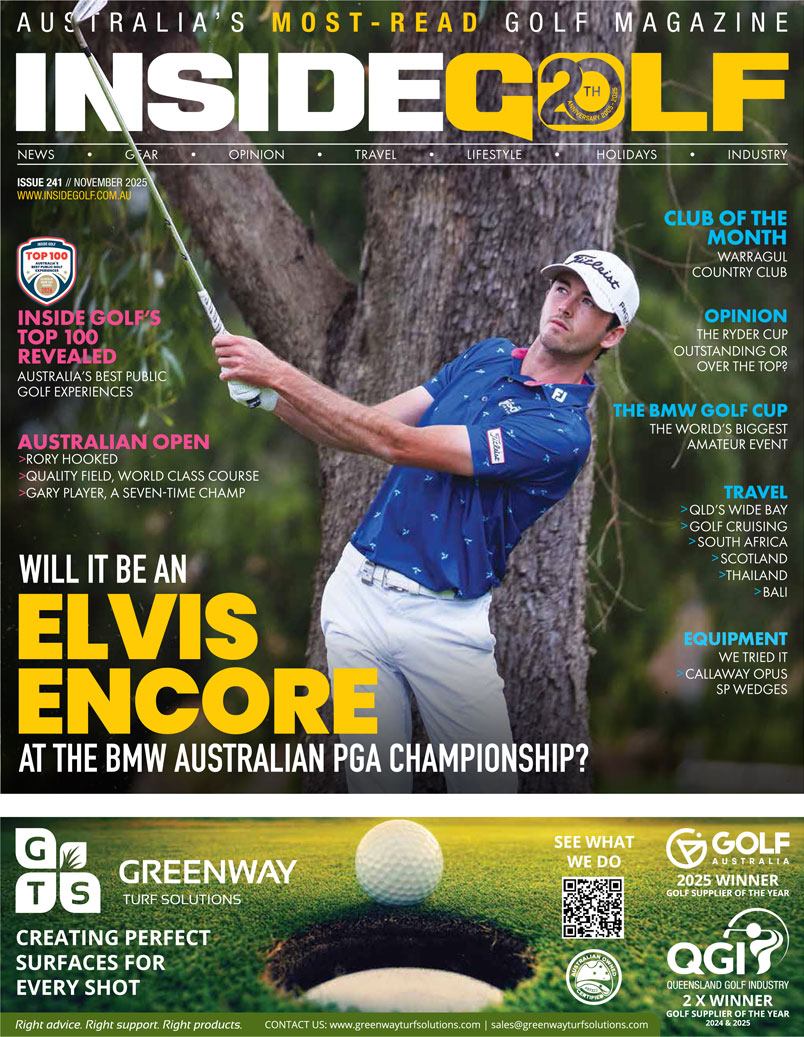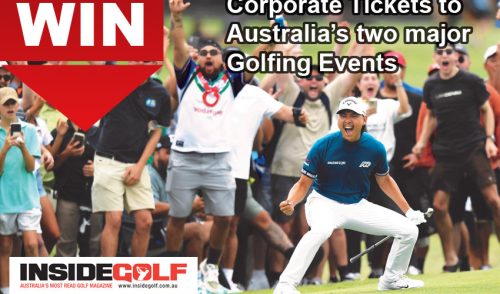CELEBRITY SWINGER: Mark Taylor
Mark Taylor AO, originally from Wagga Wagga, is a household name to most Aussies for his stellar cricketing career. Nicknamed “Tubby,” Taylor captained Australia’s Test team from 1994 to 1999, leading them to 26 victories in 50 matches and cementing their dominance in world cricket. A masterful left-handed opener, he amassed 7,525 Test runs, including a memorable 334 not out against Pakistan in 1998, matching Sir Donald Bradman’s record before declaring the innings closed.
Renowned for his slip-fielding, Taylor’s 157 Test catches were a record at retirement. After cricket, he became a respected Nine Network commentator and Cricket Australia director. Awarded Australian of the Year in 1999, the Australian Sports Medal and Centenary Medal in 2000, and inducted into the Australian Sport Hall of Fame, his resume is nothing short of remarkable. Taylor’s leadership, humility, and love for sport make him a notable figure, whether swinging a bat or a golf club.
Off the cricket pitch and out of the commentary box, golf is another of Taylor’s passions. Utilising his vast network of friends, he brings together the prolific ‘Sporting Chance’ charity to help children with cancer by financially enabling mobile home care units (nurses) in making life easier for young patients. Their most recent golf day was at Kingston Heath Golf Club in February.
Inside Golf’s Andrew Crockett caught up with Taylor to talk golf, cricket and his charity work.
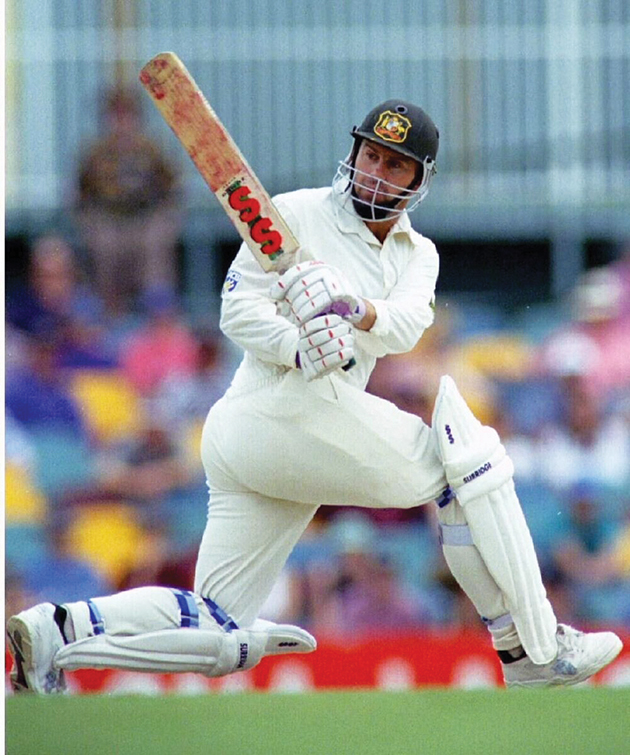
A former Test captain and opening batsman, Mark Taylor led Australia on 50 occasions.
Can you remember your first hit of golf and who took you out there?
Oh, my first hit was with my father, Tony. It would have been in a place called West Wyalong in western New South Wales. I would have been roughly six or seven. My dad was a member when we lived out that way.
I wanted to play left-handed, but using right-handed clubs, I started out with a cross-handed grip and eventually adopted a traditional setup. Interestingly, my dad was exactly the same. He also played golf right-handed as I do but probably should have started as a left-hander since he played cricket left-handed. Both of my sons, now 32 and 30, play golf left-handed.
Do you putt left-handed or right-handed?
I putt right-handed, but I could certainly putt left-handed. I can hit a short iron left-handed with no worries.
Your dad was obviously a good athlete. Did you get the golf bug as a kid, or did that come later on?
Definitely as a kid. When we moved to Wagga, I was seven turning eight. My dad played at Lake Albert quite a bit. That was where I really got into it. I remember school holiday clinics at Wagga, where we’d get a few lessons and hit a few balls.
I think from those days forward, I always enjoyed golf. I probably found it more relaxing then than I do now, to be honest.
By the time you were playing state cricket, were you still playing golf, or had you put it aside?
When I started playing state cricket, I joined Pennant Hills Golf Club in Sydney as a junior member at about 20. A great mate of mine, the late Neil Marks, had a father who was the club captain. By my 21st birthday, I was playing regularly and had a handicap of about nine or 10.
Was that the lowest you got down to?
I got to eight during my cricketing days. Like many cricketers, I thought I’d lower my handicap once I finished playing, maybe become a two-marker. Unfortunately, I’ve played less golf since retiring from cricket, and my handicap has blown out to about 15. I only play four or five times a year these days, and I need every one of those 15 shots—and then some!
Have you ever had a hole-in-one?
I’ve had one. I think I’m still an honorary member at Bonville Golf Club, and that’s where it happened. It was the fifth or sixth hole, about 135 meters, with a raised green so I couldn’t see where the ball landed. I hit an 8-iron, knew it was close, but didn’t realize how close until I got to the hole. Fortunately, one of the young pros had a camera with him, so I have some nice photos from that special moment. Some people never get one!
Did you ever get to play golf with legends like Richie Benaud and Doug Walters?
Oh, yes. Doug lived near me in Carlingford, and I was in Epping. I played a lot with him at Pennant Hills Golf Club and at country cricket matches for sponsors. In fact, I played a charity day with him just two months ago.
I got to know Richie Benaud better toward the end of my playing days and even more in commentary at Channel Nine. He became a great friend, but I must say, he took more of my money on the golf course than I took of his!
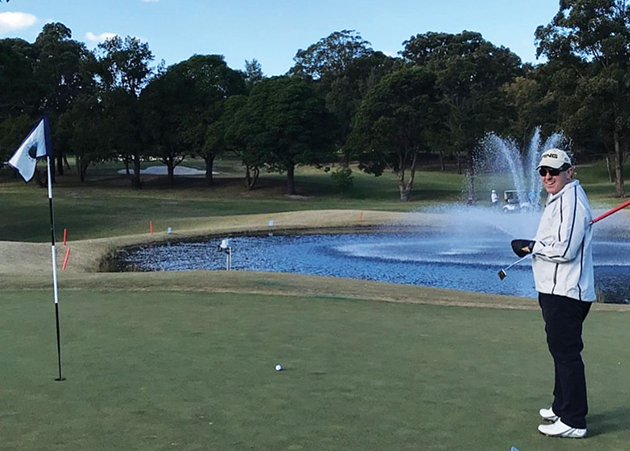
While he doesn’t get out onto the course as much as he’d like these days Mark Taylor loves his golf.
What was it like playing golf with Shane Warne?
During our cricket tours, I could get the better of Warnie most of the time. But after his playing days, he improved a lot and was much better by the time he was in the commentary box with us.
Warnie played golf like he played cricket—either going for an eagle or taking a double. He wasn’t conservative! And when you played with him, you needed to carry cash because he loved a wager. I’m not much of a gambler, but the stakes were always higher than I was comfortable with!
Can you name some great golf courses you’ve played while touring?
Back in my playing days, we had rest days during Test matches, so we’d play in between games. I’ve played St Andrews, Royal Lytham & St Annes, Sunningdale, The Belfry, Mid-Ocean Golf Club in Bermuda, and Sun City in South Africa.
Here in Australia, I’ve been lucky enough to play all the great courses. Just two days ago, we had our ‘Sporting Chance’ charity day at Kingston Heath, and later this year, we have one at The Lakes—both exceptional courses.
In talking golf and charity, what motivated your leap into altruism, particularly supporting kids with cancer with the Sporting Chance Cancer Foundation?
It all started with a man named Jack Hughes. We studied surveying together at university, and his brother, Chris, was a head and neck cancer surgeon who wanted to start a charity in the late ‘90s. He approached me to be a patron of this charity to help raise funds for cancer research.
I became a patron in 1997, and by the early 2000s, I had joined the board. In 2001, we learned about a home care program at the Brisbane Mater Hospital that was on the brink of shutting down due to a lack of funding. That’s when we decided to direct our efforts toward supporting kids with cancer, and we’ve been growing our impact ever since.
The nurses we sponsor do incredible work for kids and their families, many of whom are in regional Australia, far from the medical care they need. These nurses are an absolute godsend, providing essential care and support where it’s needed most.
How does golf play a crucial role in the charity’s efforts, and how can our readers get involved?
Sporting Chance Cancer Foundation started on the back of a golf day at Terrey Hills in 1997. That first event raised far more money than we expected, allowing us to expand our support for home care programs. Golf has been central to our fundraising efforts ever since.
Today, our flagship event in Sydney is held at The Lakes on October 13. We’ve also established a Melbourne Golf Day at Kingston Heath, which is managed by one of our board directors, Rob Hines.
We are fortunate to have major sponsors like Fujitsu Air Conditioning and Taylor Constructions, but there is always more work to be done. Golf days bring people into the charity and provide the crucial funds needed to sustain our six or seven programs. Anyone can support us by attending these golf days or donating via Sportingchance.com.au.
We’re also always on the lookout for corporate sponsors. Getting people to play golf is the easy part. What we really need is support from corporate partners who love golf and want to contribute to a cause that makes a difference. If you have ties to regional Australia or a connection to cancer, our programs directly help families facing some of their toughest times.
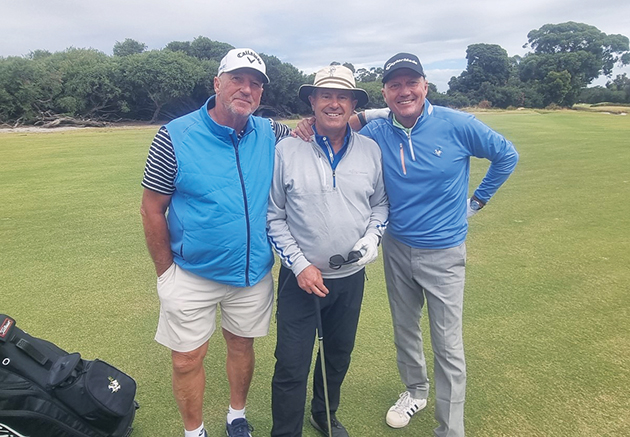
From left, Ian Botham, Mark Taylor and James Brayshaw at the Sporting Chance Golf Day at Kingston Heath.
Any new golf events planned for 2025?
We have race days in Sydney and Brisbane. In Brisbane, we’re considering pairing a golf day with the race day to maximise our impact. It’s not a fundraiser yet, but we’re testing the waters to see if there’s interest.
I noticed Ian Botham was at Kingston Heath recently. Is he actively involved with Sporting Chance?
No, he’s not actively involved, but I’ve known Beefy since my early days playing for NSW in 1986 when he was touring with England. We’ve always got along well.
His Australian manager, Rod Loader, enjoys golf, so over a few beers six weeks ago, I mentioned our Melbourne golf day. They were both keen to play. We also got Beefy to join a chat with James Brayshaw, who helps out with our charity, and we turned it into a fantastic sportsman’s night for the guests. It was a great success.
How is Sporting Chance progressing overall?
We’re in a strong position. Times are tough for everyone, and charities often feel the strain, but we managed to keep our programs running through the COVID years. Our nurses stayed on the job, which was crucial for the families relying on them.
That said, we’re always looking for new supporters. It’s difficult to go back to the same people year after year for funding. We’ve been incredibly fortunate to have Fujitsu Air Conditioning as a major sponsor for 16 or 17 years, contributing around $12 million over that time.
The Sporting Chance Cancer Foundation
THE Sporting Chance Cancer Foundation was formed in 1996 by former Australian Cricket Captain Mark Taylor, Rugby League legend Reg Gasnier, Olympian Raelene Boyle and Triple Brownlow Medallist Bob Skilton. They are a non-for-profit organisation committed to financially supporting mobile home care units that help make life easier for children with cancer and outreach programs for kids with cancer from regional areas.
Other patrons include Wallaby great, Stirling Mortlock, QLD State of Origin & Dragons legend Mark Coyne, Australian cricketer Ellyse Perry, NSW Origin & Roosters star James Tedesco and Australian cricket fast bowling legend, Merv Hughes.
The Sporting Chance Cancer Foundation currently provides just under $1 Million p.a. across Australia so that our major children’s hospitals can employ a Clinical Nurse Consultant (CNC) to operate outreach programs for kids with cancer allowing them to stay for as long as possible in the comfort of their own homes and to keep disruption to the family everyday life to a minimum.
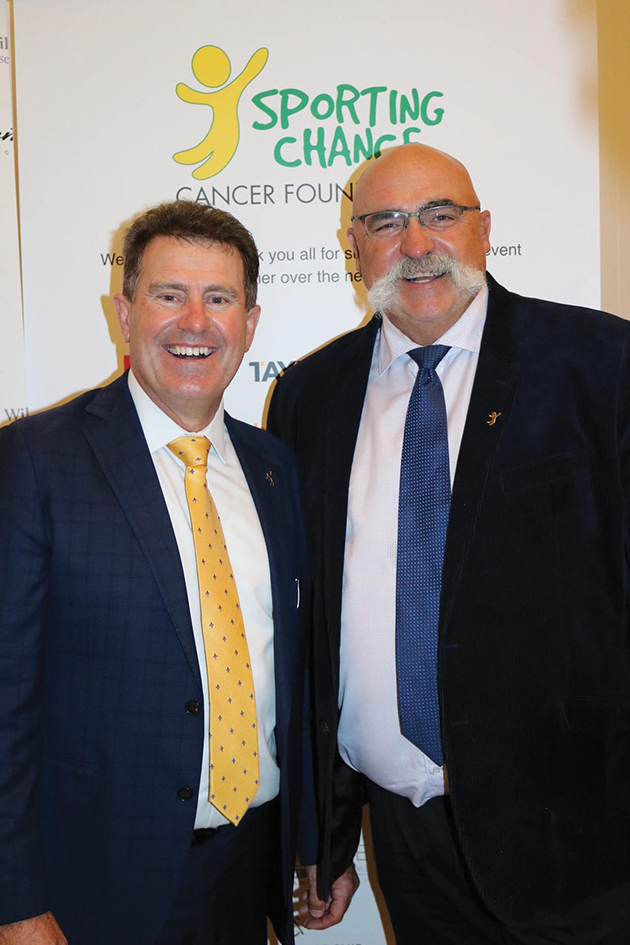
Former cricketing teammates Mark Taylor and Merv Hughes are ambassadors for the Sporting Chance Foundation.
Whilst the patients are predominantly from regional areas the service also provides home treatment for kids in metropolitan areas.
Sporting Chance funds a nurse in QLD, four in NSW and a nurse in both Victoria and South Australia (who also covers NT).
Each nurse requires between $100,000 and $125,000 funding per annum to cover wages and on-costs such as travel expenses.
Each program would cease without the support of Sporting Chance. The board must re-commit to funding prior to the re-employment of each nurse.
Since foundation Sporting Chance has also provided over $1million to the Children’s Cancer Institute of Australia for scientific research and $300,000 to Randwick’s Prince of Wales Hospital to fund a Metastatic Breast Care Nurse, $100,000 to the Men of League Foundation, and $20,000 to Glenn McGrath to help set up the McGrath Foundation, which has gone on to become one of Australia’s biggest foundations.
Visit https://sportingchance.com.au/donations/ to support their efforts and to get further involved in their corporate golf charity days, contact Matthew Laverty, via www.lavertygolf.com.au/
The House of Golf Charity Challenge – supporting the Peter MacCallum Cancer Centre
Innes Ireland is being ironic when he says he was one of the “lucky ones” to be struck down by a rare form of cancer last year.
The popular co- owner of the Mentone House of Golf was last year admitted to the Peter MacCallum Cancer Centre (PMC) in Melbourne where he was diagnosed with a very rare form of skin lymphoma – Mycosis Fungoides.
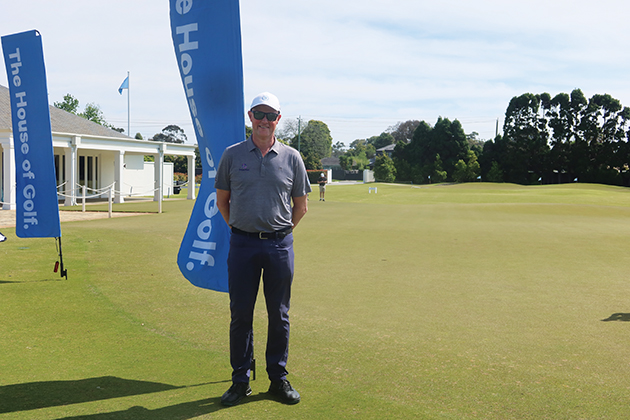
Innes Ireland, owner of the Mentone House of Golf, runs a charity golf day in support of the Peter MacCullum Cancer Centre.
“Approximately 50 people in Australia are diagnosed with this condition each year, I’m one of the ‘lucky’ 50,” Innes says.
“I went through three weeks of radiation treatment to help alleviate the condition and it was during this treatment I arranged a meeting with the PMC Foundation CEO and suggested I wanted to run a charity golf day and we held the first House of Golf Charity Challenge.”
The day was held at Kingston Heath and was an outstanding success raising $71,000 profit for the Peter MacCallum to be in the top five fundraising events for the centre in 2024.
“We could not have been happier with the way the day went and we plan to hold it for many years to come with the continued generous help of our sponsors and supporters,” Innes says.
“The golf family are very generous when it comes to charity days and we cannot thank them enough.”
The event is on again this year and potential players and sponsors can contact Innes at House of Golf in Mentone.
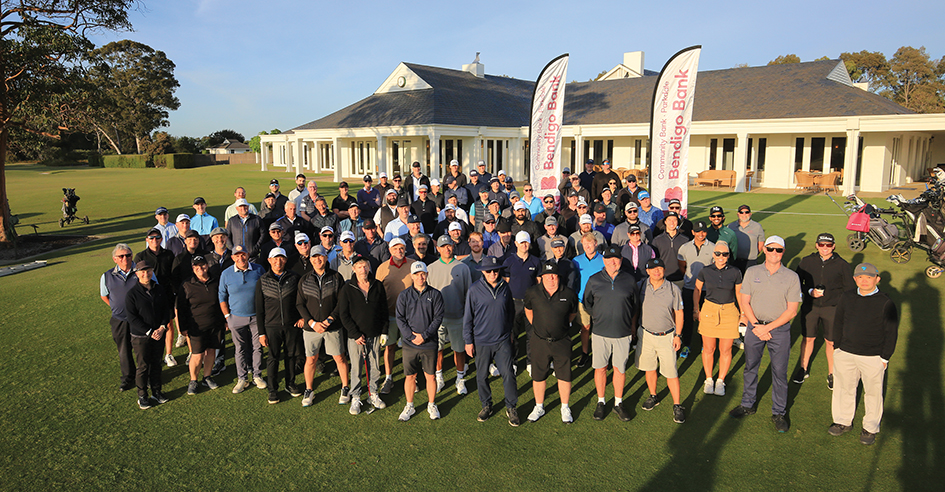
The first House of Golf Charity Challenge was a success, with a second installment coming later in 2025.


